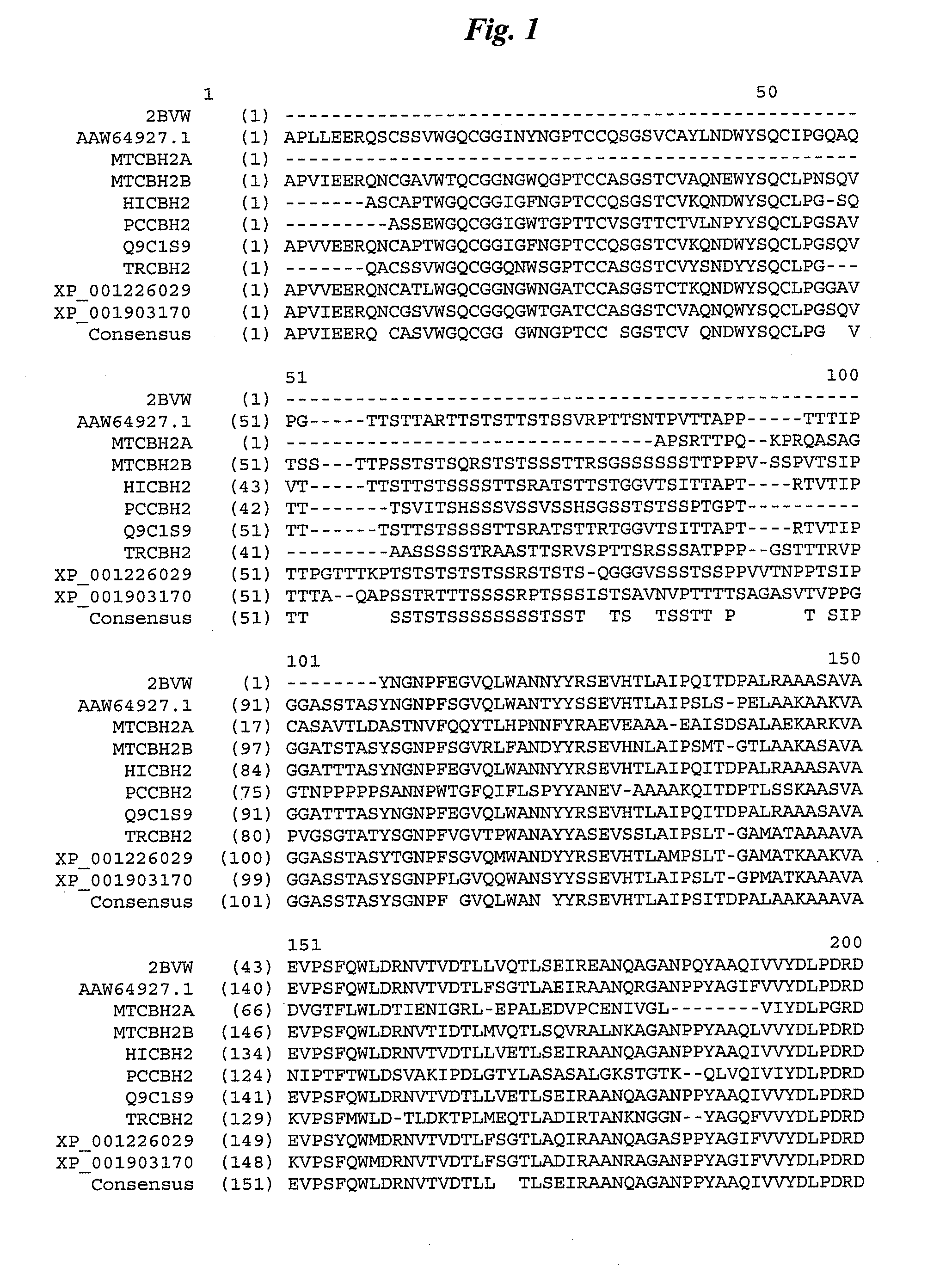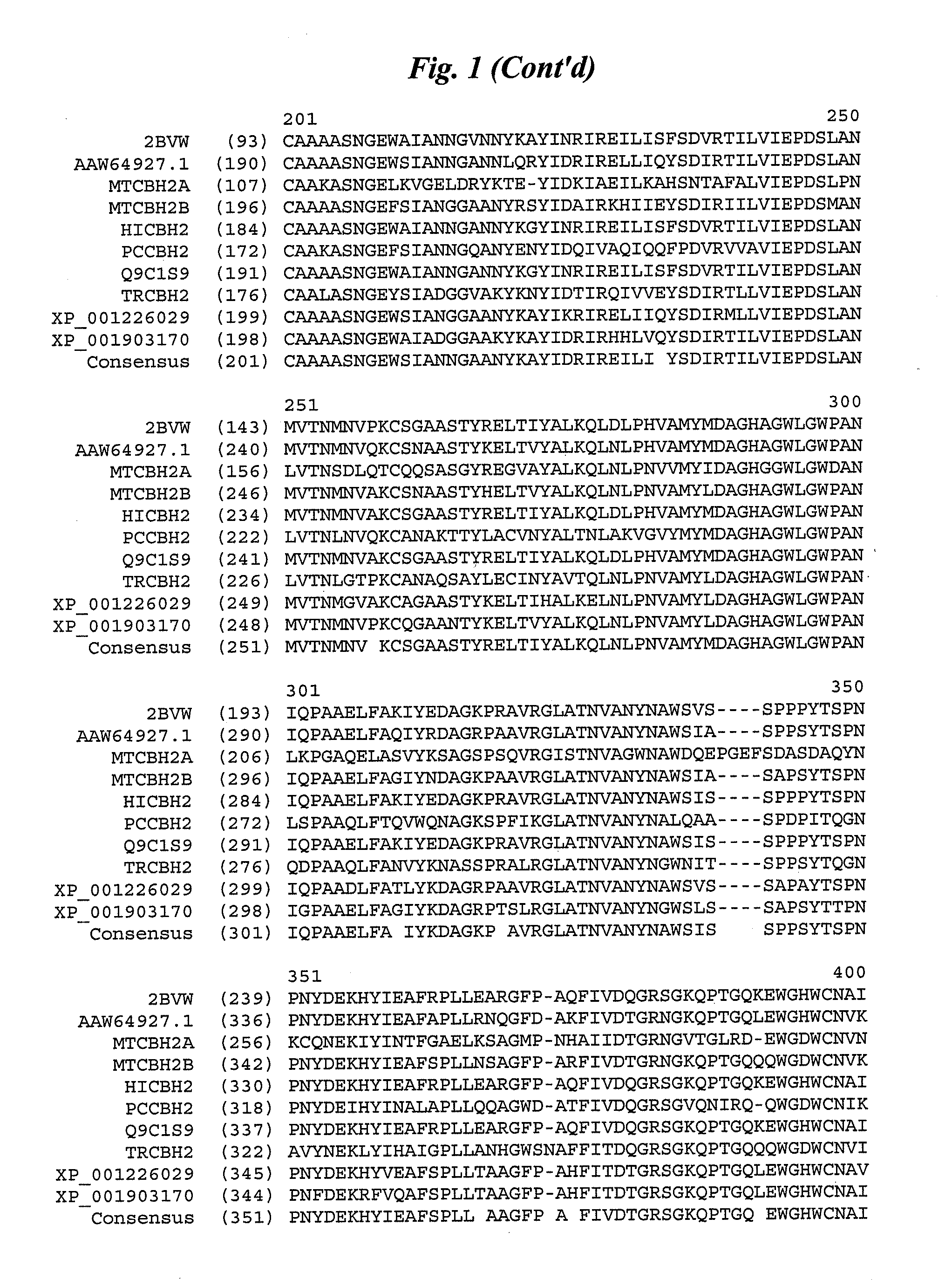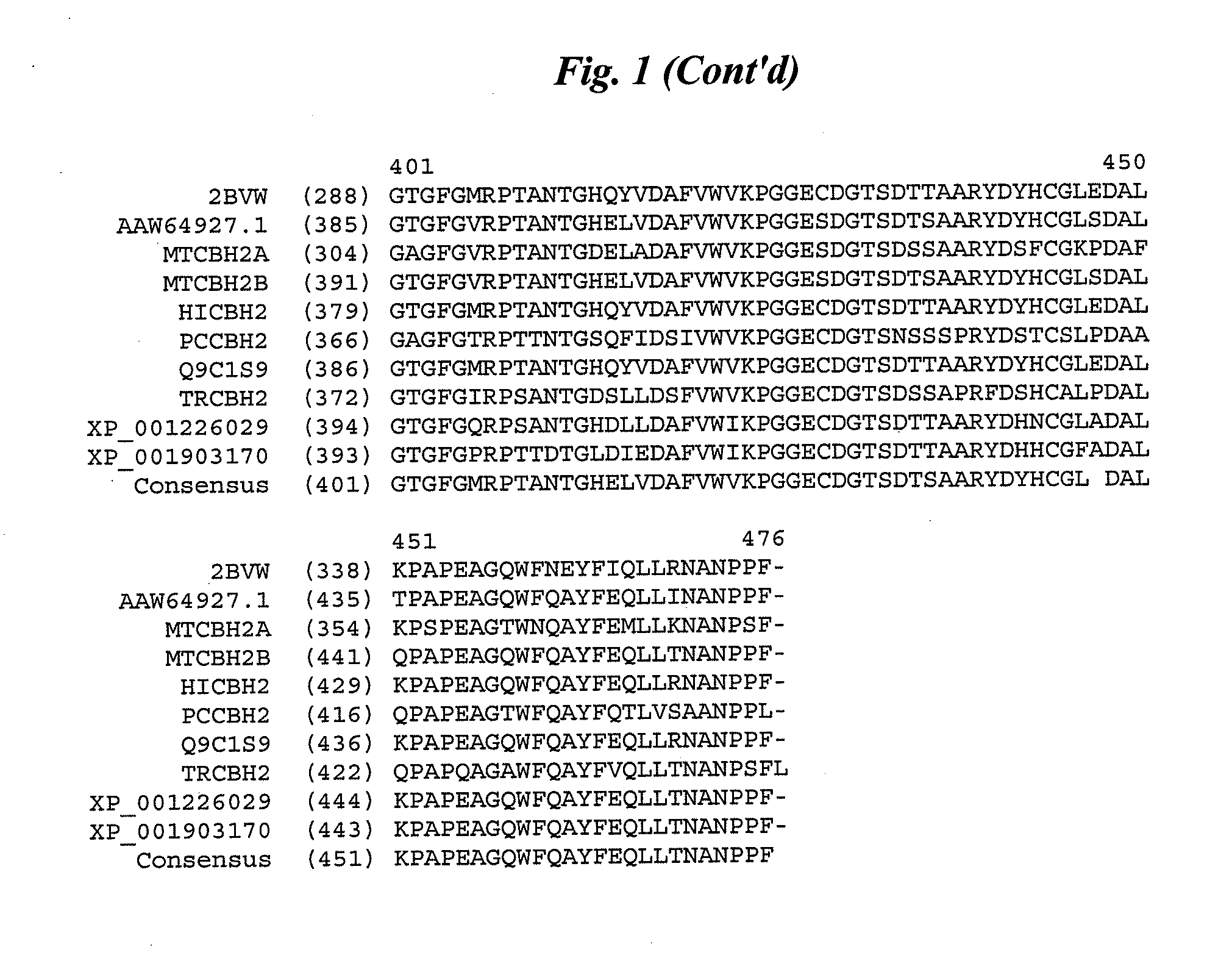Cellobiohydrolase variants
a technology of cellulosic biomass and variants, applied in microorganisms, organic chemistry, enzymology, etc., can solve the problem of difficult efficient conversion of cellulosic biomass into fermentable sugars
- Summary
- Abstract
- Description
- Claims
- Application Information
AI Technical Summary
Benefits of technology
Problems solved by technology
Method used
Image
Examples
example 1
Wild-Type M. thermophila Cellobiohydrolase Type 2b Gene Acquisition and Protein Sequencing
[0360]The M. thermophila CBH2b cDNA gene was cloned by PCR amplification from a cDNA library using vector-specific primers that flanked the inserts. Following isolation of the gene, the gene was sequenced. The sequenced mature (i.e., lacking the endogenous signal peptide MAKKLFITAALAAAVLA, SEQ ID NO:40) M. thermophila CBH2b protein is provided as SEQ ID NO:1. It was determined that the amino acid sequence encoded by the M. thermophila CBH2b gene differed from the previously published sequence (U.S. patent application Ser. No. 11 / 487,547, published as US 2007 / 0238155). Specifically, the sequencing results indicated the presence of a tryptophan residue (encoded by the codon TGG) at position 14 of the mature M. thermophila CBH2b protein, which is not present in the published sequence. This newly identified tryptophan residue is located at the N-terminus of the protein in the cellulose-binding doma...
example 2
Construction of Expression Vectors
[0362]For the Round 1 thermostability screen, the wild-type M. thermophila CBH2b cDNA gene disclosed in Example 1 was cloned for expression in Saccharomyces cerevisiae strain InvSc1, a commercially available strain (Invitrogen, Carlsbad, Calif.). For the Round 2 thermostability screen, a variant derived from the Round 1 screen, variant 81, was cloned for expression in the Saccharomyces cerevisiae strain InvSc1.
example 3
Shake Flask Procedure
[0363]A single colony of S. cerevisiae containing a plasmid with the M. thermophila CBH2b, or variant, cDNA gene was inoculated into 1 mL Synthetic Defined-uracil (SD-ura) Broth (2 g / L synthetic Drop-out minus uracil w / o yeast nitrogen base (from United States Biological, Swampscott, Mass.), 5 g / L Ammonium Sulphate, 0.1 g / L Calcium Chloride, 2 mg / L Inositol, 0.5 g / L Magnesium Sulphate, 1 g / L Potassium Phosphate monobasic (KH2PO4), 0.1 g / L Sodium Chloride) containing 3% glucose. Cells were grown overnight (at least 24 hours) in an incubator at 37° C. with shaking at 250 rpm. The culture was then diluted into 50 mL Defined Expression Medium with extra amino acids (“DEMA Extra”) broth (20 g / L glucose, 6.7 g / L yeast nitrogen base without amino acids (SigmaY-0626), 5 g / L ammonium sulphate, 24 g / L amino acid mix minus uracil (United States Biological D9535); pH approximately 6.0) containing 1% galactose in a 250 mL baffled sterile shake flask and incubated at 37° C. f...
PUM
 Login to View More
Login to View More Abstract
Description
Claims
Application Information
 Login to View More
Login to View More - R&D
- Intellectual Property
- Life Sciences
- Materials
- Tech Scout
- Unparalleled Data Quality
- Higher Quality Content
- 60% Fewer Hallucinations
Browse by: Latest US Patents, China's latest patents, Technical Efficacy Thesaurus, Application Domain, Technology Topic, Popular Technical Reports.
© 2025 PatSnap. All rights reserved.Legal|Privacy policy|Modern Slavery Act Transparency Statement|Sitemap|About US| Contact US: help@patsnap.com



